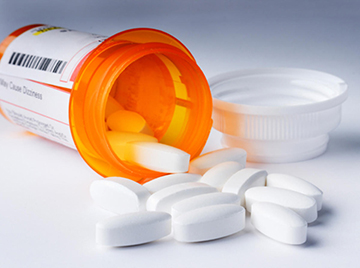Blog
Veto Needed to Stop 4 A.M. Bar Bill
 The cloak-and-dagger vibe surrounding the SB 905, the 4 A.M. Bar Bill, does not just stem from the rise in assaults and violent crimes that come with late last calls. It also arises from the combination of opacity and deliberate distortion of science that has gotten it through the California Assembly.
The cloak-and-dagger vibe surrounding the SB 905, the 4 A.M. Bar Bill, does not just stem from the rise in assaults and violent crimes that come with late last calls. It also arises from the combination of opacity and deliberate distortion of science that has gotten it through the California Assembly.
On Wednesday, August 29, the California Assembly approved the bill, authored by State Sen. Scott Wiener (D-San Francisco). On its way to the floor, it was amended innumerable times, its hearings repeatedly delayed, and its scope expanded arbitrarily. In short, it showed every sign of bad-faith governance, favoring Big Alcohol and the handful of large nightlife promoters who support its coauthors over the lives and safety of California citizens. Having already cleared the Senate, the bill now goes to Gov. Jerry Brown. Alcohol Justice and the California Alcohol Policy Alliance (CAPA) urge all concerned Californians to tell the governor to VETO it.
The bill was initially proposed as a “pilot," but it is not clear that Sen. Wiener knows what that term means. Unlike legitimate pilot studies, which seek to test a theory in a small population before any large-scale rollouts, SB 905 targets 5 of the 10 largest cities in California. Counting the "Splash Effect" from drivers within an hour of those cities, the “pilot" threatens over three-quarters of California. Never mind the fact that Sen. Wiener did not bother to put together a coherent plan to assess the impact of late last calls, nor designate funding for professional data analysis.
It is hard to tell whether SB 905’s backers are simply scientifically illiterate, or are literate enough to understand the weight of the science opposing them. Sen. Wiener’s initial arguments for the safety bill were based on a flimsy unsourced spreadsheet that had not been analyzed at all. The U.S. Community Preventive Services Task Force performed a systematic review of 40 years of data on last call times, finding that any change of 2 hours or more lead to increases in alcohol-related traffic deaths. A one-hour change was enough to create a spike in violence, assault, accidental injury, and ER admissions.
“Alternative facts are very popular right now," said Carson Benowitz-Fredericks, Research Manager for Alcohol Justice. “California needs leadership that understands the significance of basic research in protecting lives."
Nothing about California suggests it would magically be immune to the harm experienced elsewhere in the U.S., Canada, Europe, and Australia. Despite the rise of Lyft and Uber, fatal traffic accidents involving alcohol have been rising steadily year after year. Major holes in transit service combined with the spike in rents make driving the only option for younger, lower-income Californians—the same to whom late last calls would be most appealing.
“We know who this hurts," said Michael Scippa, Public Affairs Director of Alcohol Justice. “We know how badly it hurts them. We know the catastrophic costs to hospitals, first responders, and government. We just need to make sure Gov. Brown knows as well."
Concerned Californians can TAKE ACTION to reach out to Governor Brown here. Let the Governor know that 2 extra hours of drinking are not worth our neighbor’s lives.
TAKE ACTION to tell Governor Brown to VETO SB 905.
READ MORE about the threats and effects of later last calls.
READ MORE about how SB 905’s backers failed their basic statistics classes.
GUEST BLOG: X-ing Out the J-Curve
Three Big Questions About the Global Burden of Disease Project’s Findings on Alcohol by Carson Benowitz-Fredericks, MSPH
by Carson Benowitz-Fredericks, MSPH
Research Manager, Alcohol Justice
Last month, The Lancet published a powerful study online ahead of print examining the use and harms of alcohol on a global scale. The study, part of the Bill and Melinda Gates Foundation-sponsored Global Burden of Disease (GBD) project, casts a startling spotlight on the ways alcohol impacts each  country differently, yet hits everyone across the globe. The study was heavily covered primarily for how it debunks Big Alcohol’s pet dissemblance surrounding “healthy alcohol”. As significant as that finding is, however, the significance of the GBD findings goes far beyond that.
country differently, yet hits everyone across the globe. The study was heavily covered primarily for how it debunks Big Alcohol’s pet dissemblance surrounding “healthy alcohol”. As significant as that finding is, however, the significance of the GBD findings goes far beyond that.
Q: What is special about the Global Burden of Disease’s report on alcohol?
Emodka: The Cartoon Booze That Industry Regulators Can't Say No To
"Mom, Dad! Can I get the funny vodka?"
 This is a phrase no parent is ready to hear from their six-year-old. Yet Emodka seems made to elicit exactly that query. Emodka is an imported French vodka sold in rubber-ducky-colored bottles with the goofy text message icons printed on them. In light of this gross violation of ethical alcohol marketing, the Wisconsin Alcohol Policy Project (WAPP) mobilized the residents of the state to end importing of the product into Wisconsin. It was a heartening effort in the face of Big Alcohol’s persistent and dangerous lack of accountability for its advertising practices. Yet WAPP, like all public health and safety advocates, need to see real punitive action taken against those who profit from this reckless product, or else Emodka will simply be replaced with another in the endless line of youth-oriented booze bottles.
This is a phrase no parent is ready to hear from their six-year-old. Yet Emodka seems made to elicit exactly that query. Emodka is an imported French vodka sold in rubber-ducky-colored bottles with the goofy text message icons printed on them. In light of this gross violation of ethical alcohol marketing, the Wisconsin Alcohol Policy Project (WAPP) mobilized the residents of the state to end importing of the product into Wisconsin. It was a heartening effort in the face of Big Alcohol’s persistent and dangerous lack of accountability for its advertising practices. Yet WAPP, like all public health and safety advocates, need to see real punitive action taken against those who profit from this reckless product, or else Emodka will simply be replaced with another in the endless line of youth-oriented booze bottles.
Researchers have definitively shown the link between youth exposure to alcohol marketing and harmful drinking. Connecting harmful products to cartoons has been a primary method of marketing to youth for almost a century—the tobacco industry was famously called to task for using Joe Camel to make cigarettes appeal to kids, and the sugar industry has long relied on mascots to push harmful breakfast foods on them. However, Emodka, following close on the heels of The Emoji Movie, is in a class of its own in terms of contempt for U.S. norms. So great is this level of contempt that, in the face of massive pressure from Wisconsin Alcohol Policy Project and their allies, the Distilled Spirits Council of the United States (DISCUS), the alcohol industry's spirits association, took the rare step of eventually and belatedly censuring the distributor.
Yet even this action was too little and too late, as could be predicted from Big Alcohol’s insistence on self-regulation. There is no federal or state oversight of alcohol marketing practices. All enforcement comes from within the industry itself, and that is often ineffectual. In a report published under its previous name The Marin Institute, Alcohol Justice showed that DISCUS dismissed over half of all complaints over alcohol advertising practice. Frequently, the complaint was deemed addressed with a mere promise to comply in the future. That pattern repeated itself with Stoller and Emodka, where despite violations so blatant that the industry could not help but act, the only punishment was to tell Stoller not import more once the existing stocks had sold out.
“Without consequences from the distilled spirits industry or Federal Trade Commission, the manufacturer can profitably entice children with Emodka for years while watchdogs struggle to catch up,” said Bruce Lee Livingston, Executive Director/CEO of Alcohol Justice. “Self-regulation is a joke.”
As of this writing, brick-and-mortar retailers in over 16 states, as well as online retailers, still list Emodka for sale. It is time for public health and safety advocates to take up the Wisconsin Alcohol Policy Project’s banner, get this product off the shelves, and tell state and federal regulators that we need government oversight of the alcohol industry now.
TAKE ACTION to get Emodka off our shelves and end industry self-regulation once and for all.
READ MORE about the herd of Trojan horses in Big Alcohol's social responsibility campaigns.
READ MORE about Alcopops, alcohol products carefully formulated to draw in kids.
GUEST BLOG: CA Bills Provide Hope to Stem Overdose Tide
 by Ramon Castellblanch, PhD
by Ramon Castellblanch, PhD
Quality Healthcare Concepts, Inc.
Two desperately-needed bills that would be steps in the direction of reducing California’s opioid overdose death toll, AB 2384 (Arambula) and AB 2487 (McCarty), are on the State Senate floor and are moving toward the Governor’s desk. In 2016, over 2,000 Californians died of opioid overdoses. According to the Centers for Disease Control, California’s drug overdose rate rose in 2017. It likely is still rising. The death toll is worst for older Californians, as our state’s age group with the highest number of opioid overdose deaths is 55 and older.

More Articles ...
Help us hold Big Alcohol accountable for the harm its products cause.
| GET ACTION ALERTS AND eNEWS |
STAY CONNECTED    |
CONTACT US 24 Belvedere St. San Rafael, CA 94901 415-456-5692 |
SUPPORT US Terms of Service & Privacy Policy |


